Common amiltxori, night veil
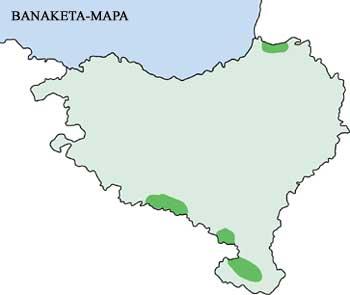
Normally, when we talk about nature or, above all, fauna and flora, we are forced to mention the disappearance of species or the reduction of populations. And it is also mandatory. In fact, industrialized society and wild activity with the human environment have degraded most of the media and ecosystems. In any case, it can be said that in recent years some species have begun to recover, either because we take a little better care of their places of residence, or because in general we have relieved to some extent the pressure on them. We could say that the ardeidos (that is, those of the group that groups herons, egrets, bird bulls and amiltxoris) are in this situation, since gradually the populations grow and the settlements expand in Europe.
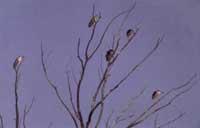
The common Amiltxori (Nycticorax nycticorax) is a small and elegant 58-65 cm earring. length that, although still relatively scarce, is reproducing and occupying diverse habitats, both in the Basque Country and in central and southern Europe.
As for its general appearance, the amiltxoria cannot be said to be a typical plow, with neck, beak and legs shorter than the herons and egrets, and a more rounded body that indicates the shape of the bird's tree life and its suitability to adapt to dense vegetation. Black back, shiny, white belly and fragile grey fins. The head is black again on the top and on the white face intense red eyes are eye-catching. On the nape has two or three fine white feathers and elegant in the heat as ornament. The beak (robust and black) is an excellent hunting instrument, while the yellow legs with long fingers are a good adaptation to move through the vegetation.
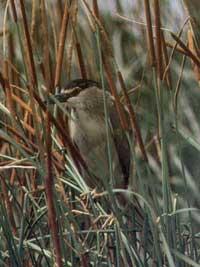
The Common Amiltxori is a magnificent flyer, but at the same time moves with great slenderness on the ground and can often be considered small birds as rabbits. Bird dedicated mainly to sunset and night. During the day, the vegetation surrounding the lagoons and lagoons develops in rest areas located in wooded areas and in riverside vegetation. When the Sun goes down, however, it is time to eat the Amiltxorierri, and with its thick files it is directed to the surfaces of rivers and lakes. The nocturnal custom and bad singing make the scientific name worthy: Nycticorax or “night veil”.
This peculiar bird of the heron group hunts its prey by walking, flying or waiting, and can be grouped into large groups. Typical pieces include aquatic insects, crustaceans, frogs and tritons, small fish and occasionally some small mammal that captures them on the shores.
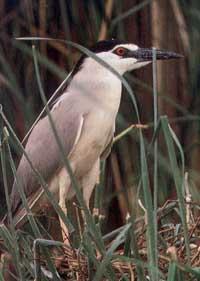
On the other hand, the common beak is a migratory bird. In Europe we have as residents and invest in Africa, south of the Sahara, from Senegal to Central Africa. Towards April he arrived in the Basque Country and began in the preparation for reproduction, to carry out this work, and if the environmental conditions are adequate, he can create exceptional colonies. In most nests it is a conical structure formed by twigs built in trees, especially willows and tamarisos. However, sometimes it can also be conditioned in the same reed, where the nest is done by demolishing and folding the reed leaves.
In May, the amilejo lays 3-5 blue-green eggs. On the other hand, if you lose the first nest, you may be able to perform the second by June. The little ones will be born at 21 days, which will take between 40 and 50 more days to complete their plumage and start doing flight exercises. During this time, chites, the care and feeding of them, are performed jointly between males and females.
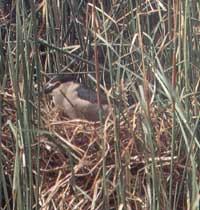
As for its appearance, the young man who has developed the feathers is quite different from the adult. The dorsal part is dark brown, painted a lighter color. In the ventral area, most feathers are whitish; sprinkled with males. It has yellow eyes and among the feathers of the head presents curious hairy luminaires. It can be said that its appearance is a little discreet. This plumage will remain for about ten months, that is, until the next year's breeding season arrives. Then, and with the renewal of the pen, his garment also transforms, taking the form of adults.
Along with that, in most cases, the young amiltxori will reach a sexual maturity. And it is that these birds are able to reproduce at the year of their birth, or at most at two years. If we add to this the maximum survival of the animal (21 years) and the number of individuals that come to reproduce for the second time (77%), it can be concluded that the abundance of amiloia is excellent.
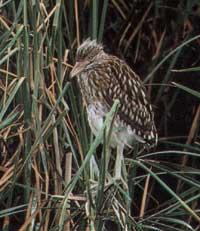
The “night veil” is one of the most cosmopolitan flocks in the world, inhabiting all continents except the poles and Australia. In Europe the nesting is scarce in the south and middle areas, and as has already been said, only appears as a holidaymaker.
As far as the Basque Country is concerned, the Common Amiltxori forms quite bright colonies in our two most important rivers. In Lapurdi, the strongest colony is located on the islands of the Aturri River, opposite Lehuntze, Urketa and Ahurti, which in recent decades is growing: From 1974 to 1980, the colony of Berenx Island went from 30 pairs to about 80. In Navarre it nests in different areas in the forests of the banks of the Ebro, from Biana to Fustiñana and Ribaforada. Also, in the river Arga there has been a reproduction in Funes, in the river Alhama in Ergabia and in the river Aragoa in Marcilla. However, the only main colony of Navarre is located in the lagoon of “Las Cañas” in Viana.
However, like the common amiltxori, the royal heron (Ardea cinerea) and the common heron (Egretta garzetta), it is a bird that extends all over Europe due, among other things, to the small advances in the control of wet media. But, despite this, this bird continues to have significant risks of getting ahead, as do the rest of the pests (and in general most birds of wet areas). It is not enough to maintain their homes. In addition, it is necessary to ensure the level of quality of the living conditions of the area: excess groundwater extraction, pollution and the toxic effect of pesticides and herbicides that accumulate along trophic chains remain a serious threat to both amylate and other species.
Technical information: Common amiltxori: Nycticorax nycticoraxFAMILY: ARDEIDOSORDEN: CICLONIFORMESCLASS: BIRDS
Buletina
Bidali zure helbide elektronikoa eta jaso asteroko buletina zure sarrera-ontzian











